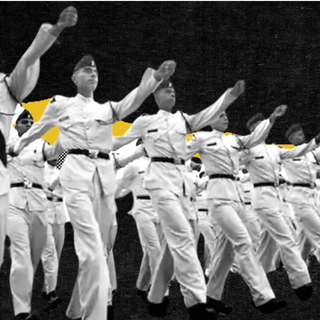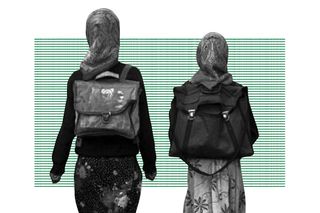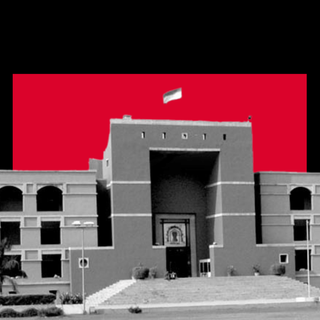
Private Schools in Delhi Discriminate Against Muslim Children, Suggests Analysis of Admissions
Only 6.1% of Muslim applicants were admitted in the general category, an acceptance rate lower than the overall average.

Muslim children are excluded in the private education sphere in Delhi from the very beginning, at pre-primary admission levels, suggests a new study. Of the number of children admitted in the general category at the early education level, only 2.7% of them were Muslims.
The new study, published in the Journal of Education and Human Development, sought to examine early educational accessibility of Muslim children at entry-level classes in private schools of Delhi. It analyzed data of Muslim children who applied for nursery school admission of private un-aided schools for the academic session of 2018-19 in the entire state of NCT Delhi. Muslim children make up roughly 16% of the early education-aged child population.
Overall, private schools’ admission rate for Muslim children across all categories was 6.1% — lower than the schools’ overall admission rate.
The study also found the percentage of Muslim children admitted under the Economically Weaker Sections/Disadvantaged Groups (EWS/DG) category (15.8%) is significantly higher than those admitted under the general category, which researchers note is reflective of the community’s low socio-economic conditions.
The study concluded that “quality” private school in the region was an option “only for elitist, privileged families with social capital.”
In the past decade, the private school market in the country has seen growth in terms of both the number of schools and enrollment rates. And Delhi is a state which has one of the highest proportions of private schools in the country, at over 40%. Private school admission in Delhi is a very elaborate process and is conducted through a rigid point system, for criteria such as: neighborhood distance, siblings in school, parents as alumni, girl child, parents as staff of the school, education of parents, and so on. The students who have the most points are then chosen for enrollment. But in a country that has seen a long, drawn-out marginalization of Muslims for decades, most Muslim families do not possess the social, cultural, and economic capital to fulfill criteria based on it.
A report from the National Statistical Office last year revealed literacy rates among Indian Muslims were the lowest of all socio-religious communities in the country. Muslims in India also had the highest proportion of youth and young adults who had never enrolled in any formal education programs. In addition, Muslims have the maximum proportion of school dropouts; studies estimate the probability of a Muslim student discontinuing school is almost twice that of Hindus or Sikhs.
Related on The Swaddle:
Woman Barred From Exams For Wearing Hijab to College
A majority of Muslim students do not have parents who might have been the alumna or staff of the school. Neither will Muslim students — who are more likely to live in disadvantaged and segregated neighborhoods such as slums and ghettos — have neighborhood proximity to these private schools. The lack of access to opportunities and educational marginalization of Muslim children, in such case, becomes intergenerational and cyclical and something that the parents inevitably end up passing forward.
And because of this vicious cycle of exclusion, most Muslim children in that case end up opting for unrecognized private schools, government schools, minority schools, and madrasas — entities that might not provide the same level of education as private schools do in Delhi.
Moreover, studies have confirmed that Muslims lag behind the national average poverty ratio as compared to other socio-religious communities. Urban poverty amongst Muslims in cities and towns is the highest of all socio-religious communities. However, according to the researchers in the study, the higher number of students under the EWs category also implies that “when given a fair and equal chance, in the absence of rigid and discriminatory ‘point system’, Muslim children will show adequate representation in educational spaces.”
The data is only further skewered for the education of Muslim girls, who come out as a particularly vulnerable group. Muslim girls’ admissions lag far behind their male counterparts. 48% of girls get admission under the general category, in comparison to 52% of boys — this is despite the girl child point. And under the EWS category which does not have the girl child point, admission trends were in favour of boys at 65%. The researchers attribute this educational gap to poverty, son preference, reluctance towards co-ed and secular schooling, and inclination towards madrasa education for girls.
The Sachar Committee Report of 2006 elaborated on how Muslims in the country face problems relating to security, identity, and equity in the country. Muslims in India lag behind in terms of most human development indicators: per capita income, standard of living, the ratio of socio-political representation, employment rates, and educational levels, and so on. Following the report, policymakers and academicians across the country have advocated for an improvement in education as it is the only sustainable mechanism to enhance the socio-economic status of Muslims in India.
This study, however, highlights how educational marginalization for Muslims in India starts at an early age, from pre-primary levels in school. This divide goes on to cause vicious scarcities in higher education, income, and employment opportunities for the community.
Satviki Sanjay is an editorial intern at The Swaddle. She's currently studying philosophy at Miranda House. When not studying, she can be found writing about gender, internet culture, sexuality, technology, and mental health. She loves talking to people, and you can always find her on Instagram @satvikii.
Related


Women Around the World Are Excluded From Decision‑Making About Environmental Conservation: Study
